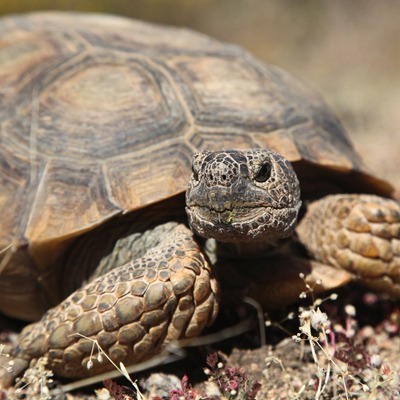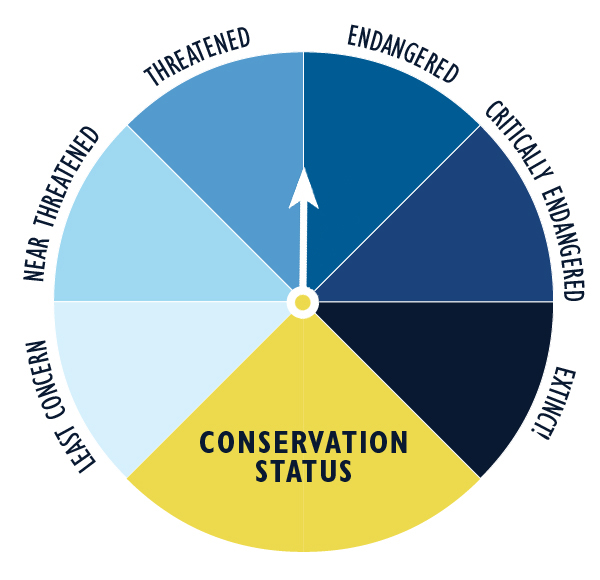
About Desert Tortoise
The desert tortoise is medium-sized for its species and varies in color from light to dark brown with orange or yellowish markings. Male desert tortoises have long, curved, gular horns (located under their neck as an extension of their shells) that are used for leverage in male to male combat.
Habitat
The desert tortoise is found in the deserts of the southwestern United States and northwestern Mexico. Depending on the deserts they occupy, these tortoises can be found to inhabit anything from thorn scrub to desert scrub and even tropical deciduous forests.
Diet
Desert tortoises are herbivores that survive mostly on low-growing plants and fallen leaves. Their diet consists of bark, stems, fruits, flower, shrubs, woody vines, and leaves. They also drink large amounts of water from temporary pools during the rainy season.
Family Life
This species of tortoises have multiple mates during their lifetimes. During their breeding season, males fight one another for access to receptive females who will eventually lay 1 to 14 round, off-white eggs. While females go to extensive measures to create and protect their egg nests, they eventually wander away and leave their young to fend for themselves. For every 15 clutches, or groups, of eggs that are laid, only one individual is likely to live to age 20.
Conservation Status
The conservation status of the Desert Tortoise is classified as vulnerable.
Threats
- The desert tortoise faces habitat degradation stemming from development, mining, and livestock grazing.
- Another threat is the illegal collection of these animals for the pet trade.
- Desert vehicles also pose a threat by disrupting natural habitats and causing physical harm to the tortoise.
Facts about Desert Tortoise
Class:
Reptilia (reptiles)Order:
Testudines (turtles)Family:
Testudinidae (turtles)Genus:
Gopherus (gopher tortoises)Species:
Gopherus agassizii (desert tortoises)Life Span:
50 – 80 years (wild)Size:
Male: 14.17 inches (35.9 cm) / Female: 5.91 inches (15 cm)Weight:
Male: 44 pounds (20 kg) / Female: 28 pounds (12.7 kg)
Fun Facts
- Temperature determines the sex of developing eggs laid by desert tortoises. Females develop at higher temperatures!
- These tortoises are dormant through the hottest parts of summer to regulate their body temperature. This behavior is known as aestivation.
- Adult tortoises have few natural predators due to their hard shell – only mountain lions are strong enough to crush their shells.